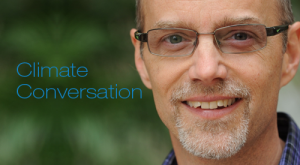Climate change and the current drought in the Southwest
 I often get asked whether the current drought in the Southwest is caused by climate change. It’s a good question, but a hard one to answer succinctly. I generally respond with a question, “By drought, do you mean the lack of precipitation (rain or snow), increasing temperatures, or both?”
I often get asked whether the current drought in the Southwest is caused by climate change. It’s a good question, but a hard one to answer succinctly. I generally respond with a question, “By drought, do you mean the lack of precipitation (rain or snow), increasing temperatures, or both?”
As I noted in a prior post, the Southwest (and West) have always experienced droughts, floods, and other extreme weather events. From a historical perspective, the last 100 years have been relatively uneventful. The present prolonged drought is not especially noteworthy for its length or severity.
However, the warming trend we are experiencing is a new development. This trend, which increased dramatically a few decades ago, is caused by the increased presence of carbon dioxide and other greenhouse gases in our atmosphere (read a pdf document on the subject here). And it has the potential to create a climatic double whammy of drier and hotter conditions.
What this means for our future weather is not entirely understood, but there is a concern that it will result in more frequent and larger extreme events. Warmer springtime temperatures have been linked to a reduction in the amount of snowpack in the Rockies, and the timing of snowmelt on western rivers (pdf), resulting in less overall water available, especially during our driest seasons. Higher temperatures in the Southwest are affecting our forests, further stressing trees and soils, making forests more susceptible to pests and wildfires. These latter and highly visible conditions are due in large part to drought, but they are also being compounded by climate change, making it difficult for the public to distinguish what impacts are caused by the lack of rain or increased temperatures.
So, we are in the process of better understanding the relative contributions of historical weather patterns and climate change to current drought conditions in the West. That uncertainty does not diminish the importance of having a broader conversation about drought, its causes and impacts. As Martin P. Hoerling, a research meteorologist at the National Oceanic and Atmospheric Administration, noted in his very good summary of the factors behind California’s drought:
Why should we care about what caused this drought, or for that matter, other extreme events like this winter’s severe cold over the Midwest or last year’s floods in Colorado? An accurate interpretation of the cause or causes can provide a preview of the future. It can help us understand whether the current experience is normal, or may instead foretell a new normal. The diagnosis is key to the prognosis.
Both answers have critical implications for how we assess risk and develop strategies to mitigate future problems and dangers. This is particularly true in the West, where we have built expensive and complex water resource systems to provide drinking water and support agriculture and industry. And it is also important for the energy infrastructure in the Midwest and the East Coast to protect against frigid winters and hot summers.
Ceske online casino The bottom line is, the correct diagnosis matters.

John Shepard

Latest posts by John Shepard (see all)
- A climate conversation for the Colorado River basin - March 19, 2014
- Climate change and the current drought in the Southwest - March 17, 2014
- Climate change: a business risk we can’t ignore - February 6, 2014

You must be logged in to post a comment Login